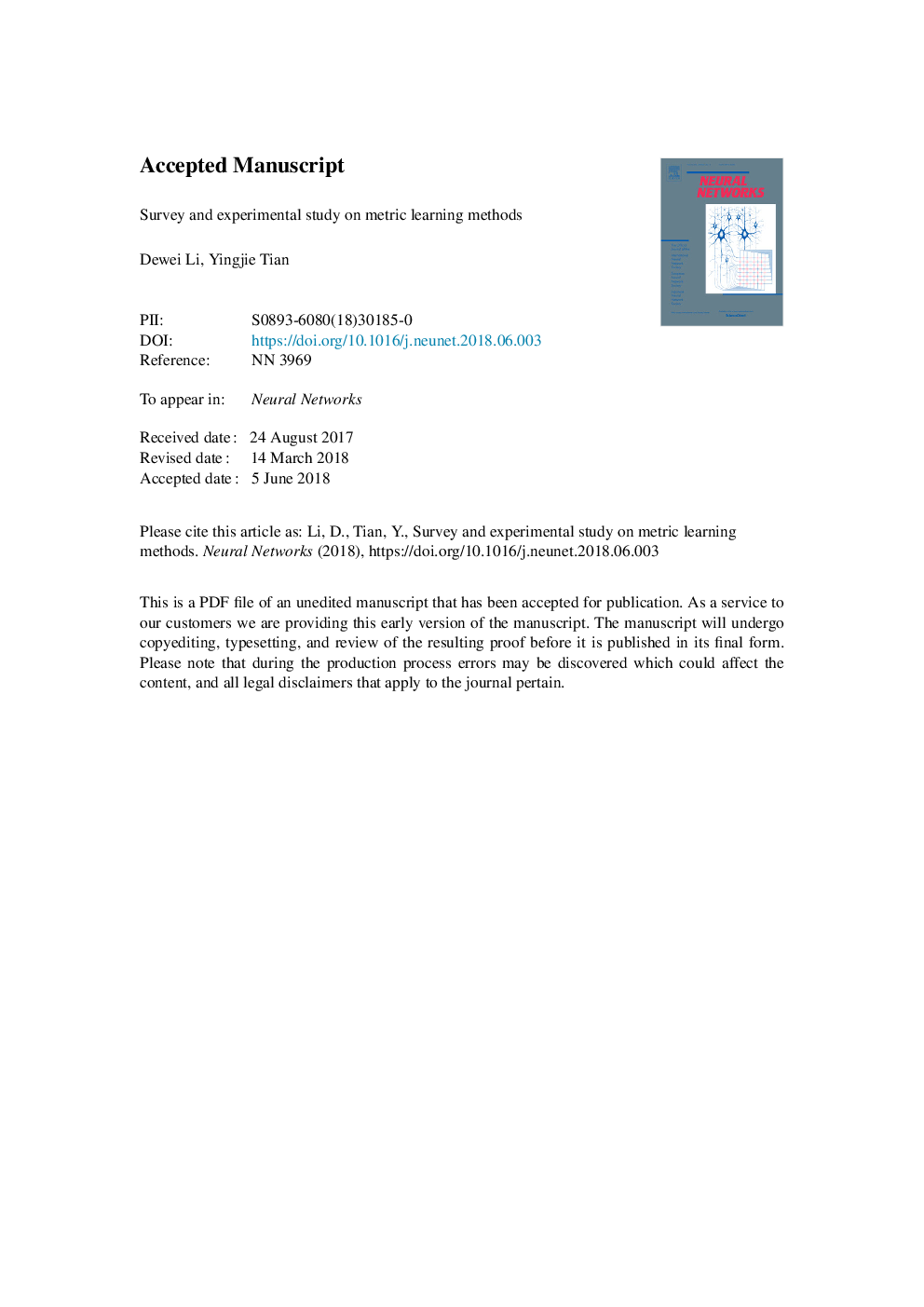| Article ID | Journal | Published Year | Pages | File Type |
|---|---|---|---|---|
| 6862897 | Neural Networks | 2018 | 28 Pages |
Abstract
Distance metric learning has been a hot research spot recently due to its high effectiveness and efficiency in improving the performance of distance related methods, such as k nearest neighbors (kNN). Metric learning aims to learn a data-dependent metric to make intra-class distance smaller and inter-class larger. A large number of methods have been proposed for various applications and a survey to evaluate and compare these methods is imperative. The existing surveys just analyze the algorithms theoretically or compare them experimentally with a narrow time scope. Therefore, the paper reviews classical and influential methods that were proposed between 2003 and 2017 and presents a taxonomy based on the most distinct character of each method. All the methods are categorized into five classes, including pairwise cost, probabilistic framework, boost-like approaches, advantageous variants and specific applications. A comprehensive experimental study is made to compare all the selected methods, exploring the ability in improving accuracy, the relation between distance change and accuracy, the relation between accuracy and kNN neighbor size.
Related Topics
Physical Sciences and Engineering
Computer Science
Artificial Intelligence
Authors
Dewei Li, Yingjie Tian,
